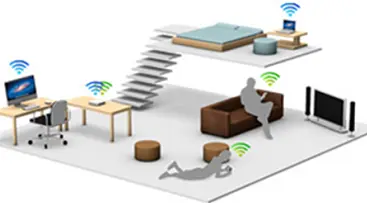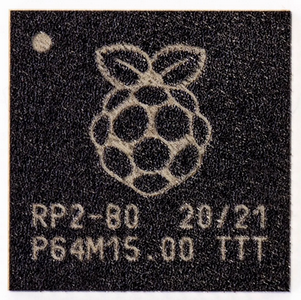Livepatch is implemented in a hacking way. It dynamically patch kernel code in memory so it should only be used in the machine can’t be reboot completely. For a normal machine, use unattended-upgrades instead.
Coelacanthus
- 0 Posts
- 73 Comments

 1·17 days ago
1·17 days agoGeoIP is the last way. Before that, geoclue will try to locate using found Wi-Fi and Cell towers via beacondb.net (via Mozilla Location Service before it shut down). If beacondb.net return fail or (0, 0), it try GeoIP at last.

 2·19 days ago
2·19 days agoIn most cases, yank in Vim just need somewhere to store contents temporarily, not share it with others.

 2·21 days ago
2·21 days agoYes. The original Ethernet use Coaxial Cable with bus topology when it was standardized at 1982. This way was used by its competitors like Token Ring as well. 10BASE5 use thicker coaxial cable so it called thick Ethernet and 10BASE2 called thin Ethernet. (5 and 2 means it can reach 500 meters and 200 meters)
And then the engineer of AT&T want to reduce cost so they found the phone line. At that time, the phone line use twisted pair line and usually have many unused pairs in the line to a office room. So they think those pair can be reused so there is almost no cost for line. Since the phone line already use star topology so they choose it as well. 1BASE5 was standardized at 1986 (so the twisted pair ethernet have lower bandwidth than coaxial ethernet at beginning) and also called StarLAN (was renamed to StarLAN 1 when StarLAN 10 was invented at 1988). And then at 1990, 10BASE-T which is based on StarLAN 10 was invented. The last is the story we all know today.

 4·22 days ago
4·22 days agoWhen I see the title, I initially thought you are talking about 10BASE5 and 10BASE2 (old Coaxial Ethernet)… I just know about DOCSIS technology, but I have never used it. In my hometown, most people switched directly from ADSL to FTTH.

 2·24 days ago
2·24 days agohttps://esp32-open-mac.be/ is working on reverse engineering ESP32 Wi-Fi hardware to implement a open source ESP32 MAC and PHY driver.

 2·25 days ago
2·25 days agoAFAIK, Mopria doesn’t develop universal printing standards actually. The IPP standard was developed by Printer Working Group of IEEE. Of course, its members are almost same as Mopria. The standard Mopria developed is eSCL, a scanning standard. eSCL has a competitor, WSD, which was developed by Microsoft.

 1·27 days ago
1·27 days agoIt may be caused by you didn’t connect GND. So debugger and board has different ground level and it looks like RX/TX were pull up because 0V on one side is equal to a higher voltage on another side.
Package managers are complex tools that handle versioning, dependencies, updates, uninstalls and so on.
No. The original package manager can only handle install, uninstall and update (even no update). Since 1995 CPAN was invented, the package manager start to add feature to handle download and dependency resolve.
Actually you still can find this kind old school package manager: Slackware, its package manager can only handle install, uninstall and update. It won’t do any dependency check or version check. It’s package format also very simple: just a tarball, install is extract tarball to specific directory and execute
doinst.shin tarball. Uninstall is invert, remove all files in tarball and executedouninst.sh.If you package all files needed by install process into a tarball and place it in your repo, you will get a Slaceware package manager with download feature. (Slackware don’t have download feature, all official packages were included in install media and you must download third-party packages by yourself.)
Package mangers are also distro specific.
Package manager can be universal. But make it universal with cost: since it can’t depend on any distro-specific thing, it must include nearly everything of userspace.
(NOTE: Your script repo is not universal since prebuilt binary downloaded from script usually depends on some distro-specific things, such as Glibc version. Glibc is backward compatible, but not forward compatible. So you can’t use these binary in the environment with lower version glibc than when it was built. So many projects will try to avoid these things, they use static-linked musl or don’t use libc at all (e.g. Golang). But it will bring maintenance pressure so most projects don’t do it unless there is an infrastructure to do it easily, such as Golang)
Actually there is some package manager make themselves universal like Gentoo-prefix and Nix.Someone suggested brew. How do you install brew according to https://brew.sh/ ?
/bin/bash -c "$(curl -fsSL https://raw.githubusercontent.com/Homebrew/install/HEAD/install.sh)"
See the problem?That’s bootstrap problem. You always need a way to get the first package manager. I don’t know how Homebrew do. But you can use curl command to download static-linked version package manager to use it without any
https://example.com/install.shfor most linux package manager (Except the one written by python. Actually you can do it as well, just download hundreds of files is annoying.).
The big round corner is unbelievable ugly… at least in my opinion. If right angle is not popular in modern UI, the small round corner like in URL bar is acceptable to me, but this one is too huge…
- IPP Everywhere also include full autodiscovery stuff (mDNS and DNS-SD, of course, Apple call this combination as Bonjour). So I said raster is the only difference.
- Raster is unimportant in Linux situation because CUPS support both PWG Raster (It’s actually a subset of original CUPS Raster) and Apple Raster. Whichever one your device supports, CUPS will work fine.
I think network printer made by big manufacturer recent years should be fine with IPP driverless. They found Printer Working Group of IEEE, this organization maintains IPP standard and IPP Everywhere™ Certification. AirPrint can be treated as Apple version of IPP Everywhere, the difference between them is AirPrint requires Apple Raster but IPP Everywhere requires PWG Raster (and JPEG JFIF file format if color printer).

 2·29 days ago
2·29 days agoI use digiKam and do sync manually.

 2·29 days ago
2·29 days agoWill it work well with existed IME like Fcitx5? Or I can choose only one of them?
I see Qt Virtual Keyboard has their own InputMethod implementations, but I think it’s not a good idea to re-invent a new IME when there is no obvious advantage, because InputMethod is not a simple thing in some languages like Chinese and Japanese.
For example, libime, the core algorithm library of fcitx5-chinese-addons uses 47k SLOC to implement a good pinyin input method algorithm, even not count the Trigram language model, which is around 30MiB.
As a comparison, the pinyin algorithm of Qt Virtual Keyboard (it seems come from deprecated AOSP’s PinyinIME) uses only 8k SLOC. And PinyinIME was give up by AOSP since 2014, it never updates since that time (and no algorithm update since 2009). At 2018, Qt pull it into Qt Virtual Keyboard and never do actual algorithm optimization. So it has fallen away from the time.

 1·29 days ago
1·29 days agodeleted by creator

 1·29 days ago
1·29 days agodeleted by creator

 3·29 days ago
3·29 days agoIf you can have a swapfile or swap partition, zswap will have much better experience than zram. And since Linux 6.8, zswap can disable writeback entirely so there will be nothing written to disk, just need a swapfile/swap partition to make kernel happy.
https://aur.archlinux.org/packages/zswap-disable-writeback

 2·29 days ago
2·29 days agoI’m looking for a Android SSH application with FIDO2 *-sk support. But I found none of them are open source and non-subscription. Termux is open source, it’s good, but their libfido2 is unpatched so can’t communicate with security key via USB or NFC on Android. ConnectBot is also great, but it lacks maintenance and doesn’t support *-sk as well.

 2·30 days ago
2·30 days agoChoose the keyboard use QMK firmware or support VIA. Their configuration will be store in flash on keyboard permanently. VIA or QMK Configurator are just a “configuration writer”.



I want an open source mouse with electromagnetic resistance wheel like one in Logitech MX Master 3S.